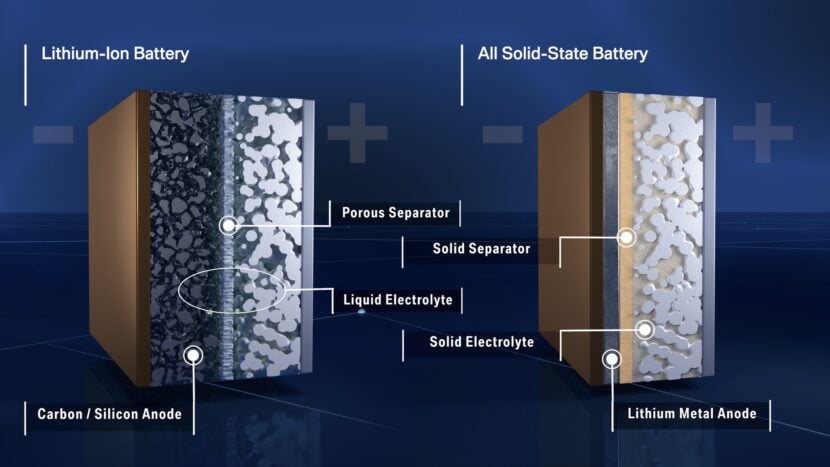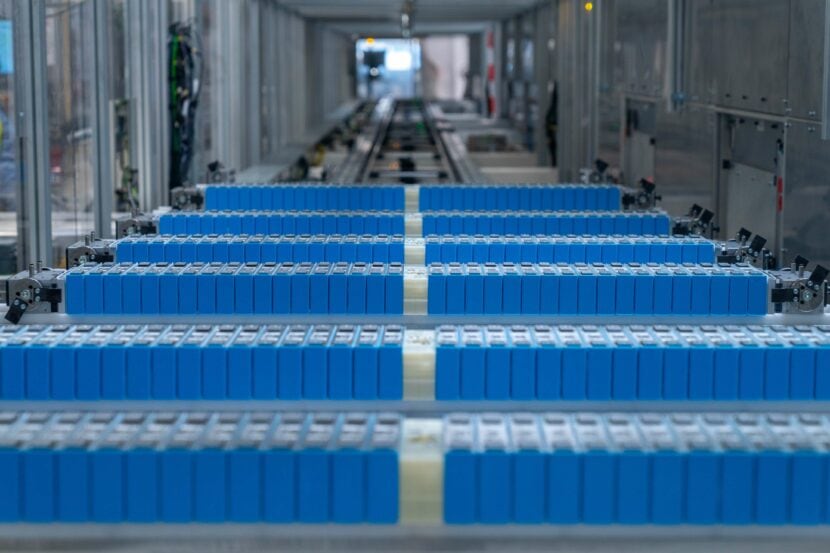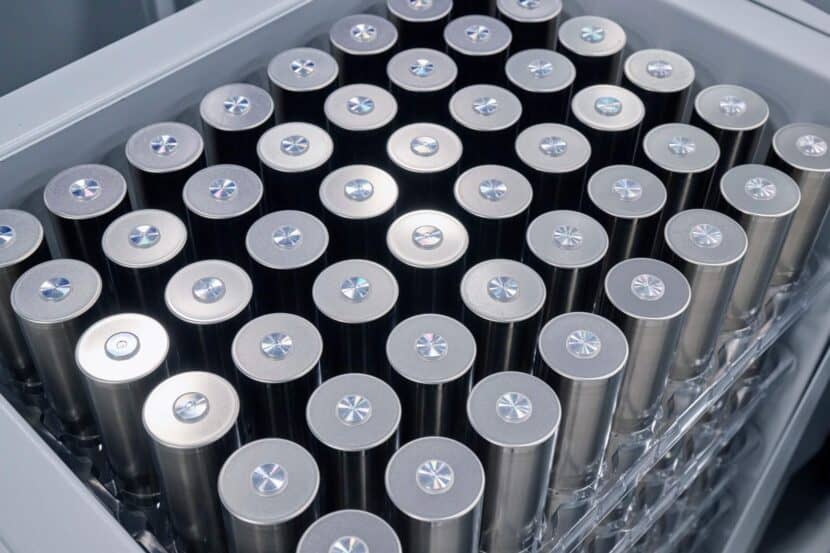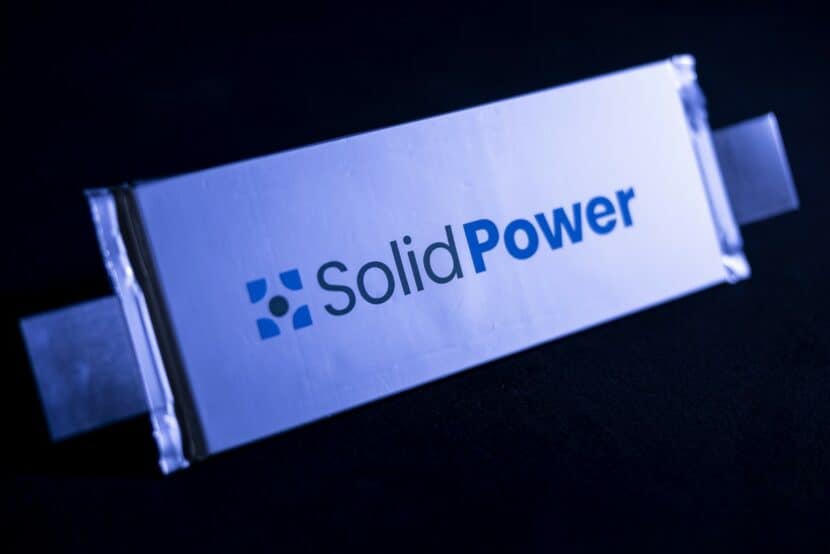Battery technology is one of the main limiting factors holding electric vehicles from surpassing their fuel-burning counterparts in all areas. The weight and energy density of the battery pack, as well as the potential fire risks it poses in the event of it being damaged in a crash, are just some of the areas where there is still a lot of room for improvement.
With the strong competition between manufacturers to outdo one another and deliver ever more compelling EVs, battery tech has seen significant gains in recent years. This was pushed by constant competition between the established car brands as well as new players (primarily Tesla) that have helped accelerate the shift to EVs. BMW says that the introduction of its sixth-generation eDrive electric powertrains will bring an energy density increase of 20 percent over what it offers in its current EVs and 30 percent faster charging too.
Those are impressive numbers, yet they seem like mere incremental improvements compared to the big gains promised by a novel way of storing current: solid-state batteries. This has been a big buzzword among automakers in recent years, especially among companies looking to be perceived as leaders in the EV field, since this revolutionary tech promises to bring exponential advancements in the energy density, safety, and sustainability of EV batteries.
Industry analysts strongly believe that solid-state batteries are the breakthrough that EVs need to explode in popularity. As the name suggests, solid-state implies these batteries don’t use a liquid or gel electrolyte, which is replaced with a ceramic or another solid material that can do the same job of facilitating the movement of ions between the battery’s anode and cathode.
Much Better Energy Density
This move to a solid electrolyte will bring a big boost to the energy density of EV batteries. It is estimated that solid-state batteries will be able to store up to 2.5 times more current than the lithium-ion batteries we use today for the same volume and weight. Today’s EVs are quite heavy, especially compared to similar internal combustion engine vehicles, and this hurts their handling. This is mainly because they have a very heavy battery, which makes them less responsive and nimble around corners, as well as less willing to stop in an emergency braking situation.
More power-dense batteries would bring about EVs with smaller and lighter packs. Engineers would also be able to design the battery pack to be smaller and take up less room, allowing for the maximization of passenger and cargo space in a way that today isn’t possible. Having a smaller and lighter battery would make EVs more efficient and improve their performance since they would have to lug around less weight.
Lower Risk of Fire and Thermal Runaway
Fire and thermal runaway are the biggest dangers posed by today’s very prevalent lithium-ion battery packs. Many things can cause one of these packs to ignite, such as being pierced during an accident through impact with a sharp object, and once an EV battery catches fire, there is a high chance that it could get out of control.
The process of thermal runaway occurs when the fire spreads from one battery cell to another. EV battery packs have hundreds of cells, and if one catches fire, it essentially starts a chain reaction. This can be so severe that some fire departments from around the world have been trained to dunk burning EVs in a huge tank of water to keep battery fires under control and the risk of the fire reigniting low.
With the introduction of solid-state batteries, EVs would instantly become safer, as the risk of fire in such a pack is much lower. This is thanks to the elimination of the flammable liquid electrolyte material and the use of a safer solid material instead. Physical damage to the pack is far less likely to cause a fire in a solid-state battery, and the risk of thermal runaway is also considerably reduced.
Another benefit to safety brought by solid-state is a lower risk of dendrite formation on the surface of the battery’s electrodes. Dendrites are crystal-like structures that can form after repeated charge-discharge cycles, and they can cause a short circuit (which can result in a fire), lead to more inefficient current transfer, or just simply result in lower battery performance.
What allows dendrites to form is mainly the crystallization of the liquid or gel electrolyte, so switching to one that’s completely solid mitigates this to a great extent.
Wider Range of Operating Temperatures
Lithium-ion battery packs don’t like to operate in less-than-ideal temperature conditions. They tend to perform poorly, whether it’s very hot or very cold. What this means for the user is that these batteries will provide less range and won’t charge as quickly. Operating an EV whose battery is not at an ideal temperature will generally also increase the likelihood of damage to the pack in some way, especially if you drive the vehicle hard or want to DC fast-charge it.
Thankfully, most of today’s EVs have ways of regulating their battery pack temperature so that most of the above risks are mitigated to a great extent. However, solid-state batteries will handle a wider range of operating temperatures better, which will make them less prone to being damaged when used in extreme temperatures and also allow them to provide more range in such conditions.
They will work and charge better and more reliably in very cold conditions, but they will also provide superior performance for longer at higher temperatures. The solid electrolyte is much less prone to high-temperature degradation compared to the liquid variety, and it also needs less intense temperature management to run optimally.
Solid-State Batteries Will Last Longer
While the expected lifespan of lithium-ion and other types of EV batteries used today is incrementally increasing, there’s still a point after which they are no longer fit for purpose and need to be replaced. This is in part due to electrolyte degradation caused by repeated thermal cycles, but if it’s of the solid variety, it will theoretically take much longer for it to degrade to a point where the battery is no longer usable.
This means solid-state batteries will last longer, thus mitigating one of today’s EV battery problems: the fact that they lose capacity a bit too quickly for some owners’ peace of mind. Some lithium-ion battery packs can lose up to 2 percent of their capacity every year through normal use, although it can be more if the vehicle is frequently fast-charged from empty to full in less-than-ideal temperatures.
Manufacturers haven’t yet said how much longer solid-state batteries will last, but it could be many times more than today’s batteries once the technology matures and is further developed.
Solid-State Is Coming to BMW
BMW is among the pioneers of the modern electric vehicle, and it wants to remain an EV leader. It has announced that it is looking to launch solid-state EVs in the not-too-distant future, but it hasn’t provided a definite timeline for this plan.
In its most recent announcement about solid-state batteries, BMW said it was deepening its cooperation with a company called Solid Power for the joint development of EV battery packs. The manufacturer expects to receive solid-state batteries for testing in early November of 2023, according to Solid Power, and it expects to have a working demonstrator vehicle up and running by 2025.
The Neue Klasse line of models, which will also debut around 2025, will still feature lithium-ion battery cells, but BMW sees this as a transitional technology and hopes to implement solid-state battery tech in its production vehicles by 2030. The automaker expects 50 percent of its global sales by the end of the decade to consist of EVs, so bringing solid-state batteries to market sooner will only bring benefits.
With their longer expected lifespans, improved energy density, better safety, and lower dependency on cobalt and other minerals whose acquisition is problematic, production-ready solid-state batteries will revolutionize EVs and become the final nail in the coffin of the internal combustion engine car.




